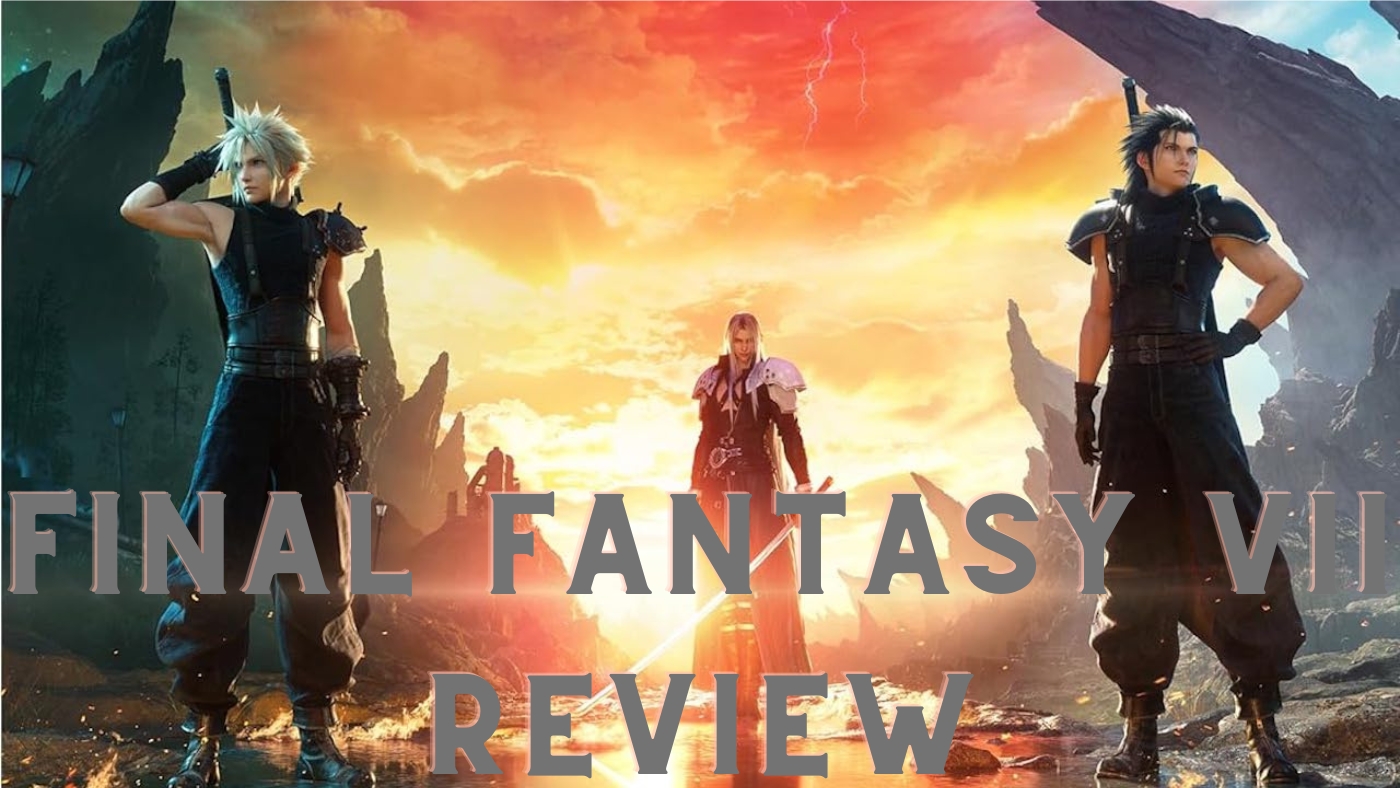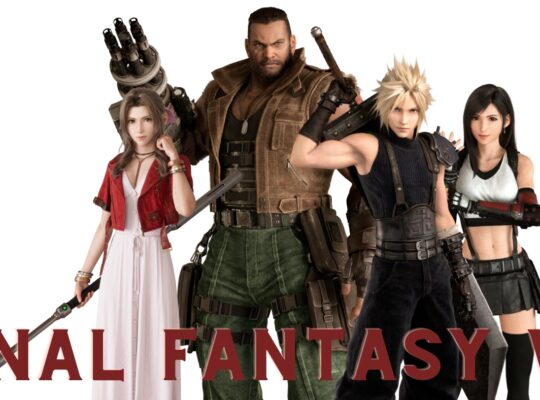Final Fantasy VII Rebirth continues the expansive multi-game remake of the iconic 1997 PlayStation classic. This second chapter thrusts nostalgic fans back into the next phase of the gripping story following hero Cloud Strife’s eco-terrorist group Avalanche fighting a corrupt corporation in the metropolis Midgar City.
Our in-depth review discusses whether Rebirth manages to balance respecting legendary source material while introducing new gameplay and narrative directions across its 30+ hour runtime. Let’s dive into the biggest highlights.
Enjoyable Character Moments
Rebirth allows spending more personal time with beloved main characters like Cloud, Tifa and Aerith. New optional side dialogues build deeper bonds, for example through campfire conversations reminiscing on dreams or motivations driving their dangerous anti-Shinra rebellion.
These heartfelt vignettes avoid diluting what originally defined their distinctive appeal. More intimate character writing pays great respect to fans’ recollection of their storied impact for over 25 years. The focused scope on bonding with core cast strikes the right balance.
Cinematic Storytelling
Fantastic cinematic direction uses real-time cutting edge graphics for drama rivalling Hollywood films, not separating story and gameplay.
- Life-Like Faces: Advanced facial capture and algorithms enable subtle micro-expressions on characters during emotional conversations, immensely strengthening player connections. This is especially noticeable for native Japanese voice acting retaining authentic performances.
- Dynamic Cameras: Context-aware shot composition ranging from wide-angle action to intimate close-ups heightens involvement in events on screen and pays homage to classic filmmaking techniques.
- Gameplay Integration: In-engine rendering for conversations utilizes game assets itself for smoother scene transitions that avoid immersion disruption seen when loading segregated video clips.
The impressive event direction and framing sucks players deeper into the exhilarating Avalanche journey full of ups and downs.
Exciting Combat System
Enjoyable turn-based battles return with some welcome tweaks:
- More Abilities: New branching skill trees like Barret’s “Commander” path meaningfully expand strategic combinations to defeat enemies.
- Streamlined Display: Clean modern interface more prominently displays key real-time information like character health, abilities, next turn order and bonuses.
- Smooth Animations: More intermediate animation frames and particle effects increase spectacle when chaining fierce blows across foes through combos.
- Varied Enemies: Fighting bizarre corporate bio-experiments along security mechs greatly diversifies turn-based encounters keeping players alert.
While RPG experts may desire more optional challenge outside major bosses, the fundamental improvements make progressing the combat system gratifying.
Expanded Environmental Interactivity
Beyond combat, upgraded platforming and physics puzzles encourage observation, inventory management and spatial awareness instead of chasing linear waypoints like older JRPGs.
Missions seamlessly connect across vast Midgar sections like slums, train graveyards and Shinra laboratories fitting coherent infrastructure geography. Persistent environmental landmarks also satisfy fans’ memory muscle between visits.
The focused interactive expansion stays clear of overscoped vehicle sections making downtime between story chunks more engaging without complexity overkill. This balance deserves praise.
Interconnected World Building
Rebirth’s expanded gritty Midgar city chunks and rural grassland zones outside retain visual consistency cementing physical continuity as players journey between them. Examples include:
- Logical Level Gateways: Missions spanning distinctive urban chapters like deterioratingTrain Graveyard link via infrastructure creating credible navigation feasibility.
- Persistent Environmental Details: Unique Midgar markers like hulking Mako reactors retaining identical placement despite cleaner textures ensure geographical credibility and exploit fans’ memory capabilities further heightening immersion.
- Hidden Lore Breadcrumbs: Easy-to-miss written notes or observant scene clues reward eagle-eyed fans by subtly expanding backstory or foreshadowing without detracting first-timers, creating depth across audiences.
This masterful interweaving of separate levels into a coherent lived-in eclectic cityscape sustains player investment exponentially more than disjointed arenas typifying earlier JRPGs. The art direction successfully modernizes scenes without sacrificing spirit.
Answering Narrative Format Critiques
Certain critics argued Rebirth’s narrowed gameplay focus offers diminished value next to later Compilation of FF7 ensemble entries. Others felt its granular detail still remained engrossing just for die-hard fans rather than attracting new players.
However, writers intentionally focused elevating the bonds between core cast instead of incorporating every spin-off narrative thread. Avoiding overscoped convolution reminds what emotional payoffs the franchise fundamentals center on even after decades.
And considering the original’s mammoth hundred hour epic story required 3 full PlayStation CDs, remaking enhancements matching modern AAA cinematic expectations justifies the multi-episode format splitting key arcs. This stays faithful towards creative passion and dedicated journey craftsmanship rather than a soulless cash grab.
In an age where yearly released big-brand sequels plague publishers seeking easy profits from player loyalty, Square Enix’s commitment towards carefully evolving one of gaming’s seminal masterpieces over multiple parts deserves commendation.
Audio & Visual Mastery
Alongside the breathtakingly picturesque graphics rendering environments/characters to hyper-realistic degrees, Rebirth’s soundtrack also complements unforgettable moments:
- Minimalist Map Theme: Wistful solo violin melodies while trekking vast wilderness zones reinforce solitude and inner turmoil Cloud harbors underneath nonchalant pretense during the resistance movement against seemingly impossible odds.
- Propulsive Battle Music: Uptempo percussive drive and overdriven bass guitar injections pump adrenaline narrowly avoiding demise against relentless corporate mercenaries and experiments hunting our heroes.
- Haunting Scene Score: New contribution ‘Hollow Skies’ by legendary franchise composer Nobuo Uematsu himself weaves delicate somber piano chords with religious choral harmonies, playing during pivotal self-reckoning moments delivering an affecting performance leaving lasting impressions for the players themselves.
The audio actively amplifies plot payoffs rather than just being a periodic distraction. This ever-present atmospheric soundtrack makes the edge-of-seat events more impactful. Game music remains the pinnacle for emotionally resonating with audiences through complementary world building.
Conclusion: A Triumphant Sequel
Final Fantasy VII Rebirth delivers an exhilarating continuation to one of gaming’s most genre-defining classics without relying solely on nostalgia pandering. Elevated combat, enriched favorite heroes and cinematic storytelling confirm Square Enix’s ambitious remake vision.
Some fans may desire even more gameplay variety or series lore injections yet remain enraptured witnessing narrative crescendos building towards the epic climax. With poignant writing, thrilling set-pieces and affectionate additions, Rebirth sets a new platinum standard for carefully reinventing even gaming’s most adored properties.
What were your favorite aspects or comparisons with the original? Share your views on this anticipated next chapter!




